Power saws can be especially convenient when it comes to quick woodworking jobs, but many homeowners find handsaws are simpler to use, more precise, and more versatile. Learn how to choose the right handsaw for your next do-it-yourself project, how to properly use it, and how to maintain it for years to come in our guide below.
The Anatomy Of a Handsaw
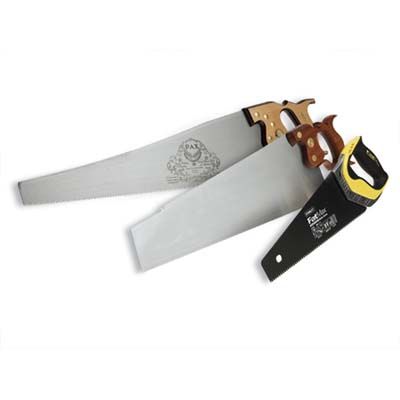
A handsaw consists of three main parts: the blade, the handle, and the teeth. Each element plays a different role in the saw’s performance.
Blade
The blade is the most important part of the handsaw. Its length, thickness, and flexibility determine how successfully it cuts and how easy it is to use. Long blades are more efficient for cutting larger pieces of wood, while shorter blades are better for more precise movements.
Handle
A handsaw’s handle should offer its user comfort and a secure grip. Handles can be made of wood, modern composites, or other materials, and should leave a safe distance between your fingers and the saw’s blade.
Teeth
A handsaw’s teeth determine how successfully the tool cuts through wood. The saw’s teeth per inch, the shape of the teeth, and the set (the slight bend in alternating teeth) collectively influence how the saw performs. Higher TPI results in smoother cuts but slower cutting speeds, and vice versa.
Types of Handsaws and Their Specific Uses
Ripsaws, crosscut saws, and hybrid saws are each designed for different tasks. Understanding each saw’s purpose will help you to choose the right saw for your woodworking project.
Ripsaws: For Cutting With the Grain
Ripsaws cut along the grain of the wood, and are the best tools for splitting boards lengthwise. These saws typically have fewer, larger teeth than other models, and feature a straight rake on their leading edges. The tooth configuration makes it easy to remove wood fibers.
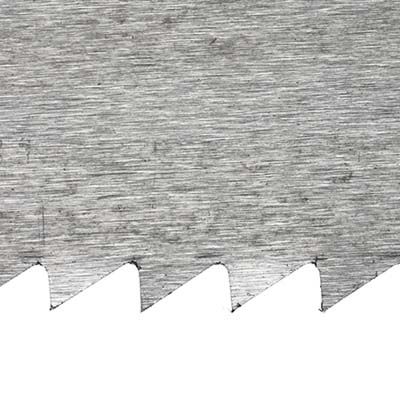
Crosscut Saws: For Cutting Across the Grain
Crosscut saws are best for cutting perpendicularly to the wood grain. They feature small teeth that are close together, and a slanted leading edge. This design allows for clean, smooth cuts across wood fibers that don’t cause splintering or tearing.
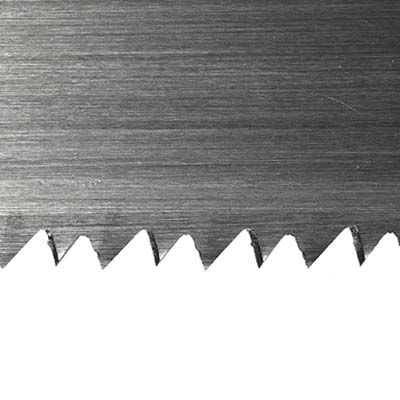
Hybrid Saws: Versatile Cutting Tools
Hybrid saws combine the best features of rip and crosscut saws. These saws feature teeth that can cut efficiently in both directions, so you can use them for a number of different projects.
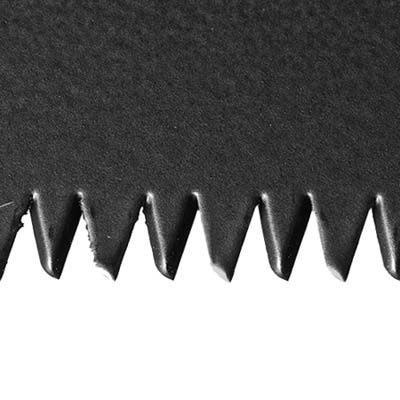
How To Choose the Right Handsaw for Your Project
Selecting the right handsaw is important to the success of your project. Consider blade length, TPI, and handle grip when making your choice.
Considering Blade Length
The length of the saw blade determines the tool’s cutting capacity and how easy it is to use. Longer blades are more efficient, but they can be difficult to use in tight spaces. Shorter blades are much more portable and can cut more precisely.
Evaluating Teeth Per Inch (TPI)
A saw’s TPI determines the cut’s smoothness and speed. High TPI (eight to 12) offers smoother cuts, but cuts more slowly, while low TPI (four to seven) amounts to faster cuts, but rougher finishes.
Assessing Handle Comfort and Grip
A comfortable handle is imperative for precise cutting. Look for handles that offer a secure grip. Consider special ergonomic designs or rubberized coatings for better comfort and control.
Mastering Handsaw Techniques
Once you find the right handsaw, you should learn the correct cutting techniques to guarantee safe and accurate work. Practicing fundamental skills such as stance, grip, and steadiness will lead to success across different woodworking projects.
Proper Stance and Grip
Place your feet shoulder-width apart for a stable stance, and position your body at a slight angle to the workspace. Hold the saw handle firmly with your dominant hand, and use your other hand to guide the blade. Keep your arm relaxed, and use your shoulder and upper body to power the saw.
Starting the Cut
Start by marking your cut line clearly on the wood. Place the saw teeth on the waste side of the line at a 45-degree angle to the wood surface. Use light, controlled strokes to create a shallow groove along the cut line. Once you’ve established the groove, slowly lower the saw to a normal cutting angle.
Maintaining a Steady Stroke
Make long, smooth strokes that use the full length of the saw blade. Let the weight of the saw do most of the work, and apply light pressure downward. Maintain a consistent rhythm, and avoid forcing the saw through the cut, which can lead to binding or inaccurate cuts.
Specialized Handsaws for Unique Tasks
Log saws, backsaws, Japanese pull saws, and other types of specialized handsaws can make unique jobs easier.
Log Saws: Tackling Thick Wood
Log saws, or bow saws, feature long, curved blades designed to cut green or seasoned wood. They can successfully cut through thick branches, logs, or rough lumber, and are best for outdoor projects or timber preparation.
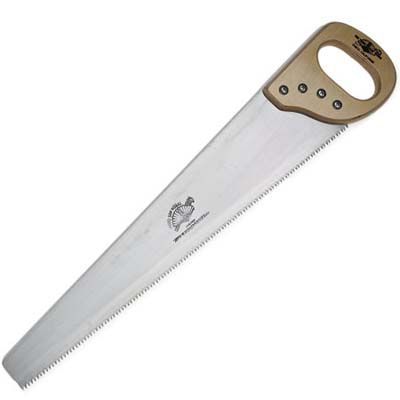
Backsaw: Precision in Joinery
Backsaws feature a thin blade that’s reinforced with a rigid spine. This prevents the blade from flexing, which leads to more precise cuts. Backsaws are best for fine joinery work, such as cutting tenons, dovetails, and other intricate joints.
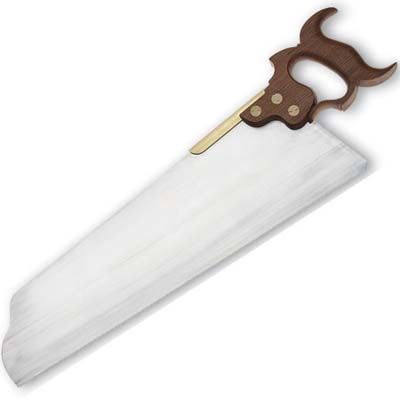
Japanese Pull Saws: Alternative Cutting Method
Japanese pull saws feature thin blades that cut on the pull stroke, unlike Western-style saws, which cut on the push stroke. Pull saws are best for delicate work.
Maintaining Your Handsaw for Longevity

Properly maintain your handsaw with the techniques below to keep it in good condition.
Cleaning and Storage Tips
Clean your saw blade with a dry cloth after every use to remove sawdust and debris. Use a light solvent or mineral spirits to address more stubborn residue. Store your saw in a dry place to prevent damage to the teeth, and hang it in a sheath if possible. Avoid storing saws in damp environments to prevent rust.
Spraying a saw with silicone-free lubricant before putting it away can prevent rusting, according to This Old House carpenter Norm Abram.
Sharpening Techniques
Sharpen a saw with a saw file that matches the tooth size and angle of your saw. Work along the blade, and use the same amount of pressure on each tooth. Remember that you can sharpen the teeth of traditional saws, but many modern disposable saws have hardened teeth that you can’t sharpen.
When To Replace Your Handsaw
If you notice excessive rust on your saw, bent or missing teeth, or a blade that’s too thin to sharpen, it’s time to replace your handsaw. Replace a disposable saw when it can no longer cut well, or when the teeth become visibly worn or damaged.
Comparing Handsaws to Power Saws
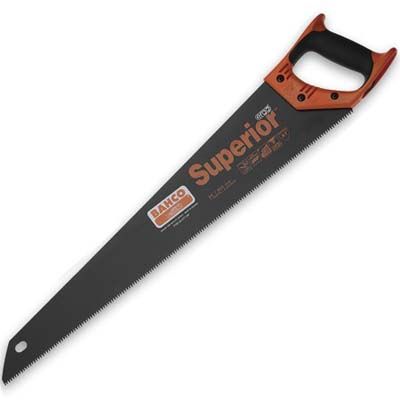
Power saws are easy to use and work quickly, but handsaws are still the better choice for certain projects. Understanding when to use each type of saw can lead to more successful woodworking projects.
Advantages of Handsaws
Handsaws are more precise, and execute intricate cuts that may be difficult with power tools. They’re also quieter, safer, less expensive, easier to maintain, and don’t require electricity.
Situations in Which Handsaws Excel
Use handsaws to make fine cuts in finished woodwork, or for projects that call for precision and control. They’re better choices than power saws for small projects, tight spaces, and awkward angles.
Integrating Both in Your Toolkit
Woodworkers should learn how to use both handsaws and power saws. Power saws are best for large-scale, rough cutting or jobs that require speed. Handsaws are best for precision work, fine joinery, and jobs for which power tools might be unsafe. Knowing when to use which will lead to more efficient DIY projects.
